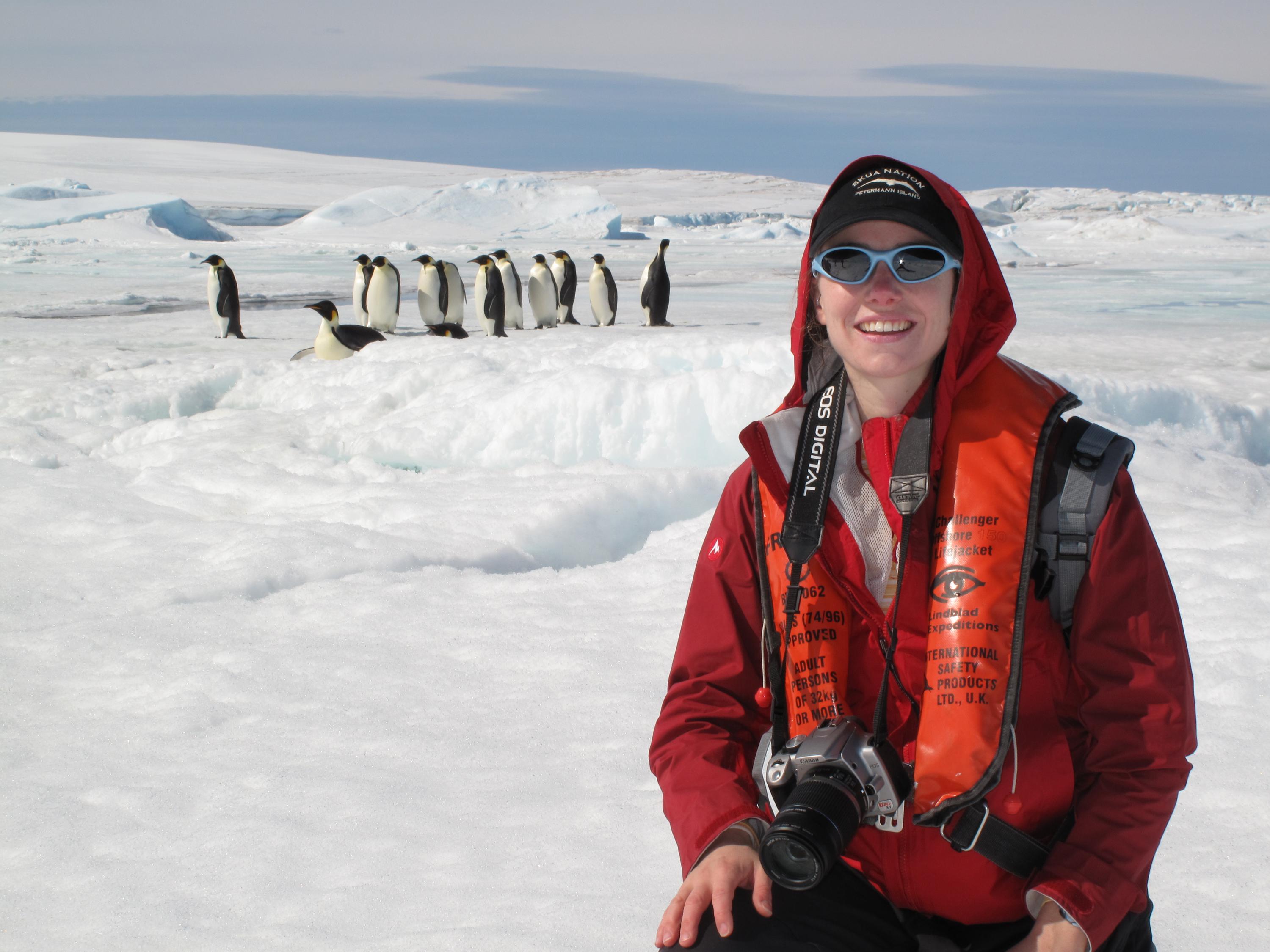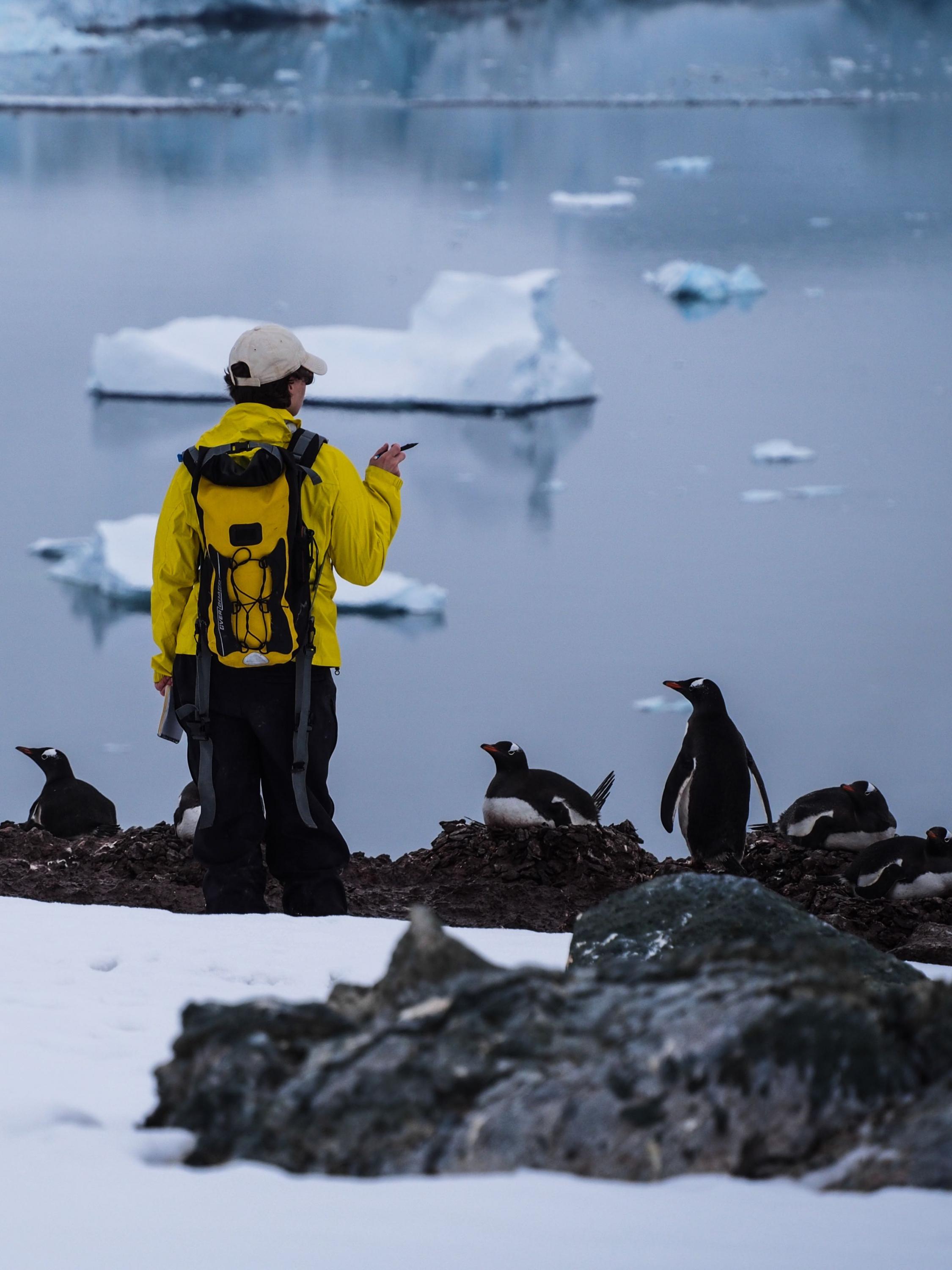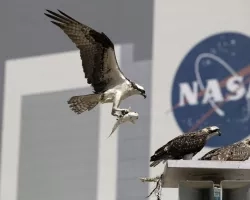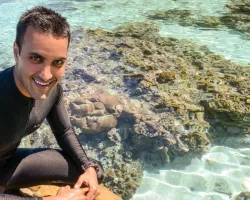Heather Lynch is one of three scientists receiving the 2019 Blavatnick National Awards for Young Scientists for her unique synthesis of cutting-edge statistics, mathematical models, satellite remote sensing and Antarctic field biology to understand the inner workings of penguin colonies.
By incorporating satellite imagery into her research, Lynch discovered several previously unknown colonies of Adélie penguins in an archipelago known as the Danger Islands—1.5 million penguins in all. She received a grant from NASA’s Earth Science Applied Sciences Ecological Forecasting Program that allowed her to advance the use of satellite imagery to study penguin presence, abundance, and even diet.
“Heather’s project has done a tremendous job integrating satellite imagery with multiple types of ground-based information within innovative modeling and data management frameworks to do ground-breaking discovery science that also has immediate relevance to conservation,” said Woody Turner, program manager for the Ecological Forecasting Program. “NASA is pleased to be a part of this exciting work.”
Lynch is a regular advisor to Antarctic policymakers, and has shared these findings with the hope of expanding the proposed Marine Protected Area for the Western Antarctic Peninsula to include this important penguin hotspot. She also works closely with affiliated non-governmental organizations and the Antarctic tourism industry to identify and protect environmentally sensitive sites.
Lynch led the team that created a free, open-access online database that integrates remote sensing to provide an assessment of Adélie and other penguin species across Antarctica. Matt Schwaller, of NASA's Goddard Space Flight Center in Greenbelt, Md., provided critical expertise in analyzing Landsat imagery to find penguin guano.
“Now that we’ve had real success with Landsat imagery, we want to automate our interpretation of the really high-resolution [sub-meter commercial] satellite imagery,” Lynch said, adding that they're using artificial intelligence, or AI, tools. “We’re collaborating with computer scientists and learning a lot of new skills in the realm of computer vision and AI. It’s a very ‘hot’ area, and we’re continuing to push the envelope in terms of exploring new and exciting places both remotely and in the field.”
Lynch is an associate professor at Stony Brook University, with a joint appointment in the Department of Ecology & Evolution and the Institute for Advanced Computational Science. Recently, the New York Times Kid’s section interviewed Lynch about her work—and asked her to respond with emojis, a challenge Lynch readily accepted.
“The work we do is really easy to explain to non-scientists because the idea of counting animals is one that everyone can get a handle on,” Lynch said. “There’s been a huge amount of press and a lot of opportunities for outreach. I’m excited to see those things go out to the kids [more] than anything else.”
Lynch and her fellow Blavatnik National Laureates, Ana Maria Rey of the University of Colorado Boulder and Emily Balskus of Harvard University, are all women—a first in the program’s 13-year history.
“I’m humbled and honored to be in the company of the other two researchers,” Lynch said. “I was surprised to be a finalist—it never even occurred to me that I would win. I’m the first ecologist to ever win, which for me is one of the most exciting parts.”
Lynch and the other 2019 Blavatnik National Laureates and Finalists will be honored at the Blavatnik National Awards ceremony on Monday, Sept. 23, 2019 at the American Museum of Natural History in New York. Awardees also receive $250,000, the largest unrestricted scientific prize offered to America’s most-promising, faculty-level scientific researches.




